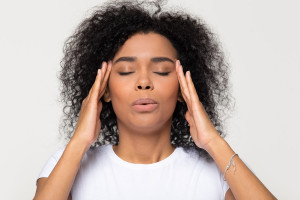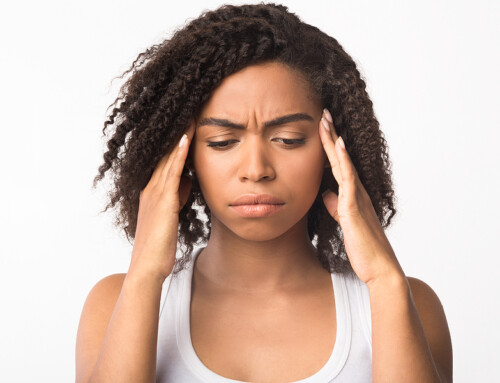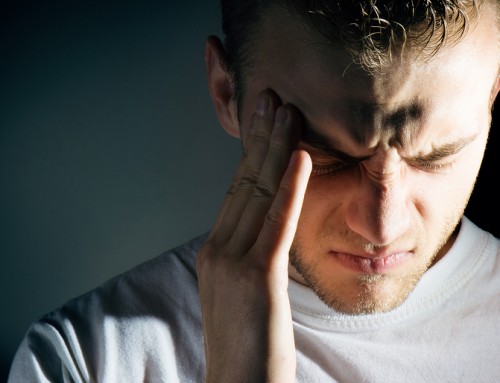Table of Contents
 Do you experience recurring headaches but aren’t sure whether its a plain headache or a migraine? To help you out, we have eleven questions you should ask yourself to find out if you’re having a migraine. Although some may seem vague, knowing the answers to these questions may help clear up some confusion regarding your condition. We will also introduce you to a rather unexpected yet effective, drug-free method of care, a technique that a chiropractor for migraines in Honolulu can help you with.
Do you experience recurring headaches but aren’t sure whether its a plain headache or a migraine? To help you out, we have eleven questions you should ask yourself to find out if you’re having a migraine. Although some may seem vague, knowing the answers to these questions may help clear up some confusion regarding your condition. We will also introduce you to a rather unexpected yet effective, drug-free method of care, a technique that a chiropractor for migraines in Honolulu can help you with.
#1: Do you feel a throbbing or pulsing pain?
In most cases, throbbing or pulsing pain is the first symptom people notice in a migraine. The best way to tell if it is a migraine is to discern whether the pain is an ache or a throb. There are other things to note regarding migraines. Firstly, migraines can occur in different severities, so just because you can still function despite your pain doesn’t mean it’s just a simple tension headache. Secondly, migraines can also occur on both sides of the head, not just on one side. Lastly, migraines do not always occur with a headache, but they still come with other neurological symptoms.
#2: Do you experience auras?
Even though only 20-25% of people with migraines experience it, having an aura 20-30 minutes before your headache is one way to tell that you are experiencing a migraine. An aura is a visual symptom that comes before a migraine. You may see light patterns such as wavy, zigzag, or crosshatch lines during an aura.
#3: Do you have mood changes?
If you do not usually experience these symptoms and only observe them hours before a headache sets in, this might be another telltale sign that what you are experiencing is a migraine. These symptoms can come a day before a migraine episode starts.
#4: Do you have a stuffy nose?
One common mistake that people make is to write off headaches that come with congestion as sinus headaches. The truth is, migraines can also come with a stuffy nose and watery eyes. Some studies have even shown that migraines are often mistaken for sinus headaches because of these certain symptoms.
To learn more about the connection between head and neck injuries and migraines download our complimentary e-book Natural and Drug-Free Ways to End Your Migraines by clicking the image below.
#5: Are you craving specific foods?
You get a craving for your favorite food, but after a few hours, you suddenly experience a bad headache. You might think that the food is what gave you the headache, but the food might not be the trigger at all. Food craving is a common migraine symptom that comes a day before the headache sets in, which is why people often think that certain foods trigger migraines when in fact, they are one of the less-common triggers.
#6: Is your neck painful?
Neck pain is actually the third most common migraine symptom, not falling far behind the top two (with number one being a headache). A reported 75% of people who have migraines also experience neck pain. In many cases, the pain even starts at their neck and travels upward to their head, which starts the headache. Sometimes, even doctors fail to see the connection between migraines and neck pain.
#7: Are you frequently urinating?
Surprisingly, you can also tell if a migraine is about to strike if you’re suddenly making more trips to the bathroom than usual. This is another symptom that comes before the headache.
#8: Are you often yawning?
Yawning is yet another migraine symptom belonging to the prodrome phase. This phase includes symptoms that come before the migraine, while postdrome (also known as a migraine hangover) includes symptoms that come after the migraine.
#9: Do you experience nausea and vomiting?
One of the most common symptoms of a migraine is nausea, most likely brought about by the pain accompanying a migraine. Vomiting does not occur as frequently as nausea, but for some, these symptoms go together.
#10: Are your senses overly sensitive?
Another sign of migraines is sensory sensitivity, whether it be from lights, sounds, smells, or a combination of the three. The overload of the senses can trigger a migraine attack, which is why people who have migraine episodes often seek dark, quiet places for recovery.
#11: Does physical exertion increase the pain?
If your migraine is not severe, it may be hard to identify the other symptoms. One easy way to determine if you are experiencing a migraine is to see if physical exertion makes the symptoms worse. Exerting yourself usually aggravates your symptoms of a migraine, especially the throbbing pain. People often complain of their migraines worsening as they do tasks such as lift weights, run, or engage in sexual activity.
Hopefully, our list served helpful in identifying if you have a migraine or a headache. Since we care for you and want you to feel better, we’d like to propose a method that can help with your condition.
Upper Cervical Chiropractic Can Help With Migraines
If you have experienced migraines after a head or neck injury, you may have an upper cervical misalignment. Just a slight misalignment of the upper two bones of the neck can cause problems with the blood flow to the brain, cerebrospinal fluid drainage, and brainstem function. An easy way to prevent your migraines is to correct the misalignment using a gentle adjustment. To explore this option, you may contact us at Upper Cervical Hawaii in Honolulu, Hawaii, or call 808-201-1324.
To schedule a consultation call 808-201-1324 or simply click the button below.
 If you are outside of the local area you can find an Upper Cervical Doctor near you at www.uppercervicalawareness.com.
If you are outside of the local area you can find an Upper Cervical Doctor near you at www.uppercervicalawareness.com.





